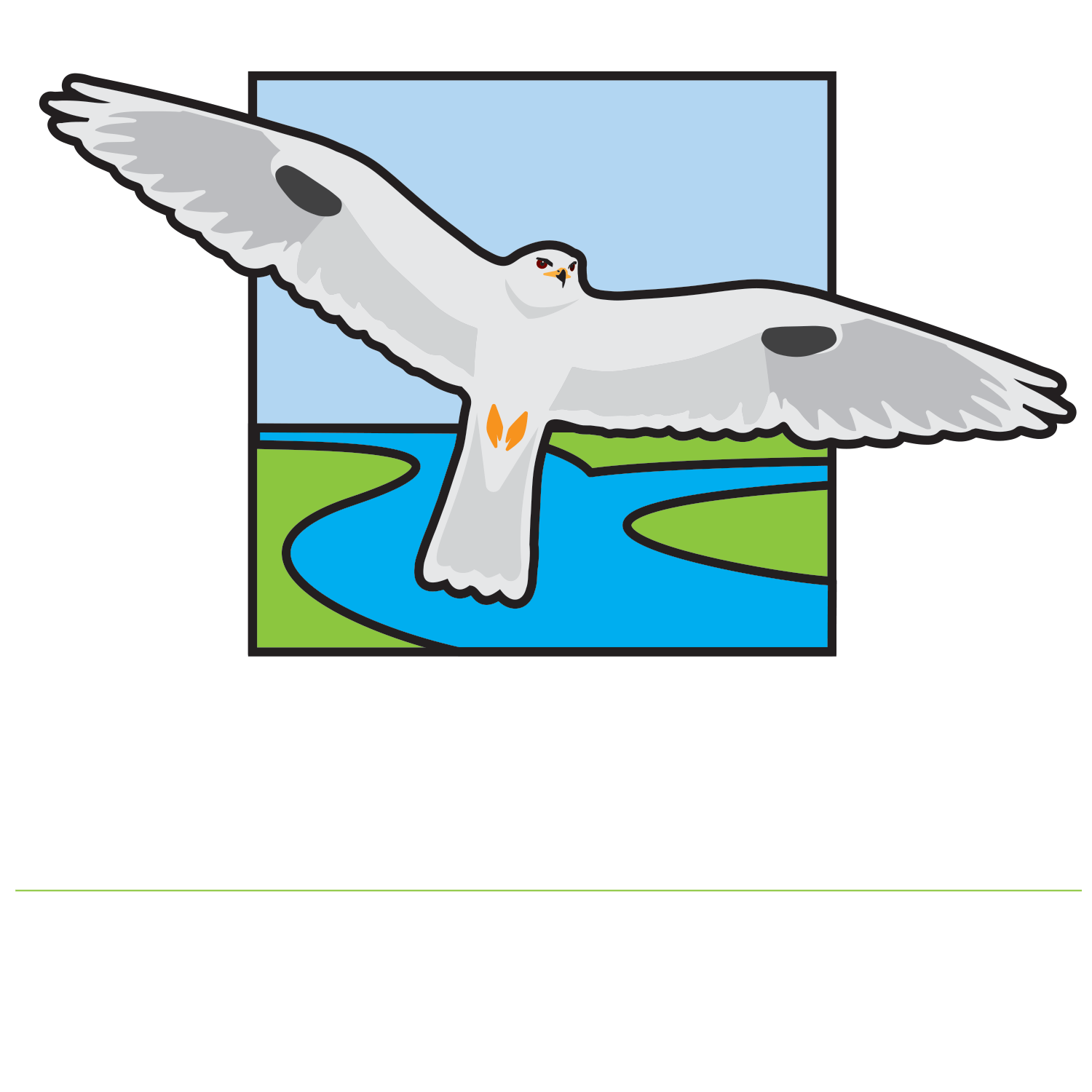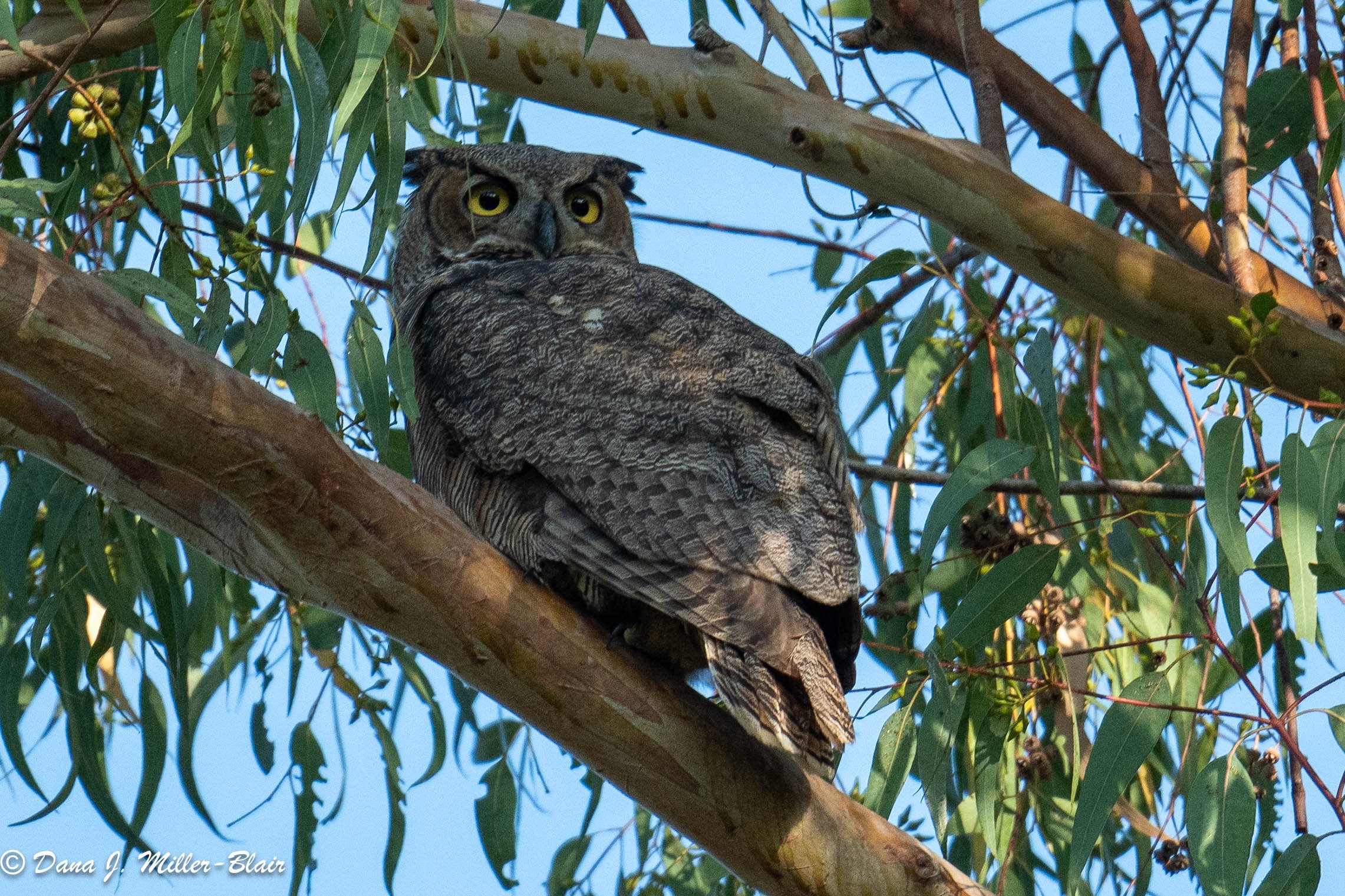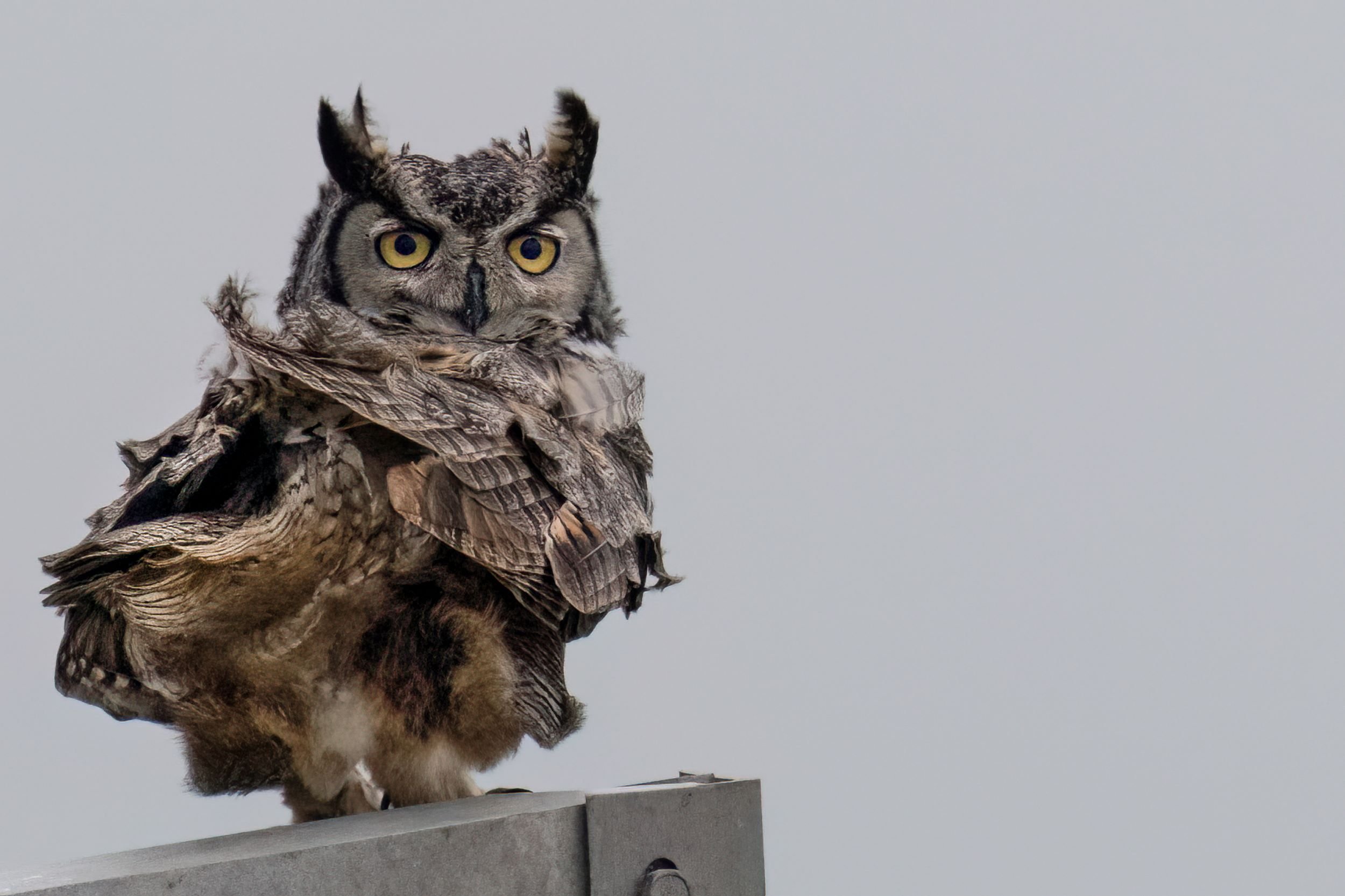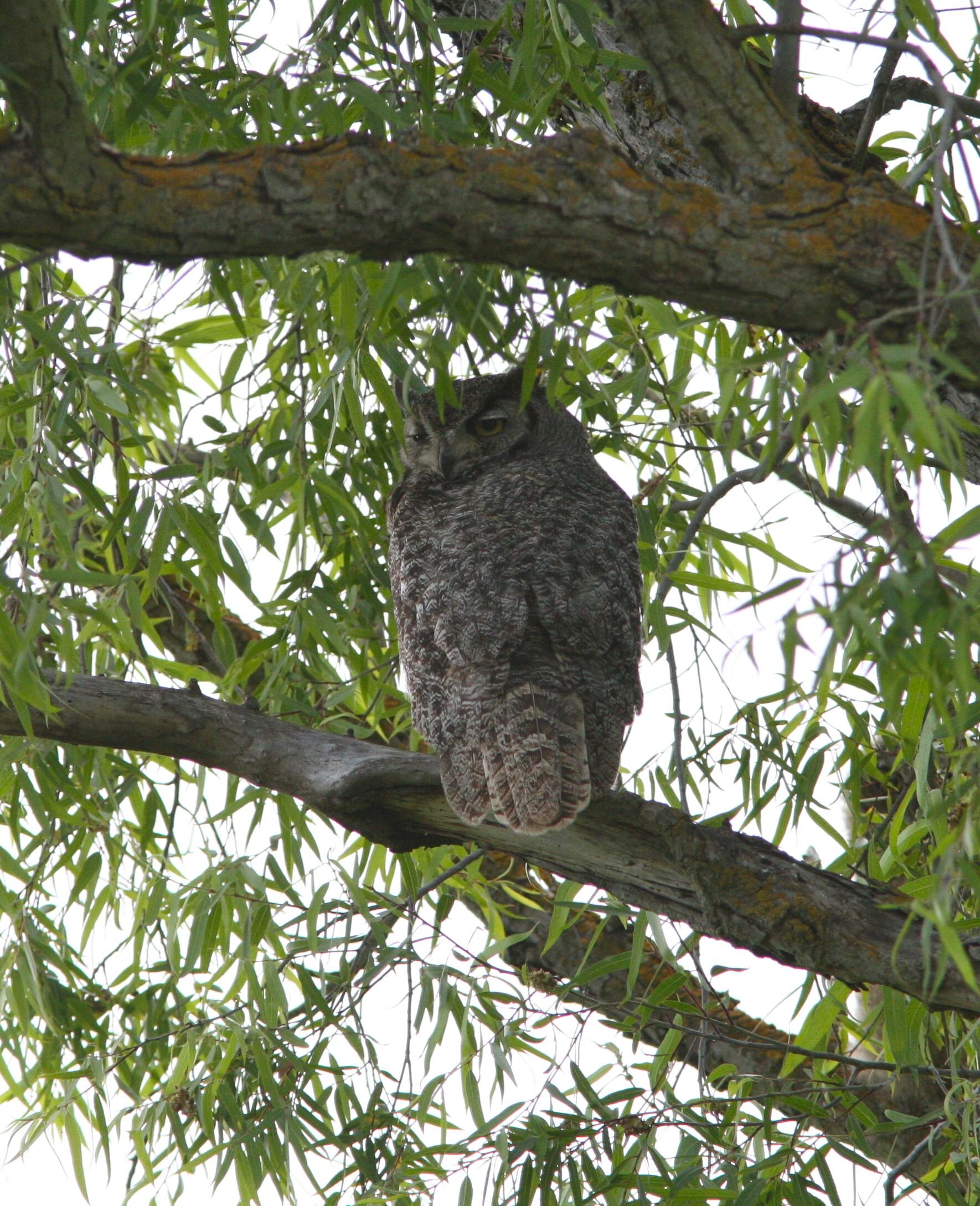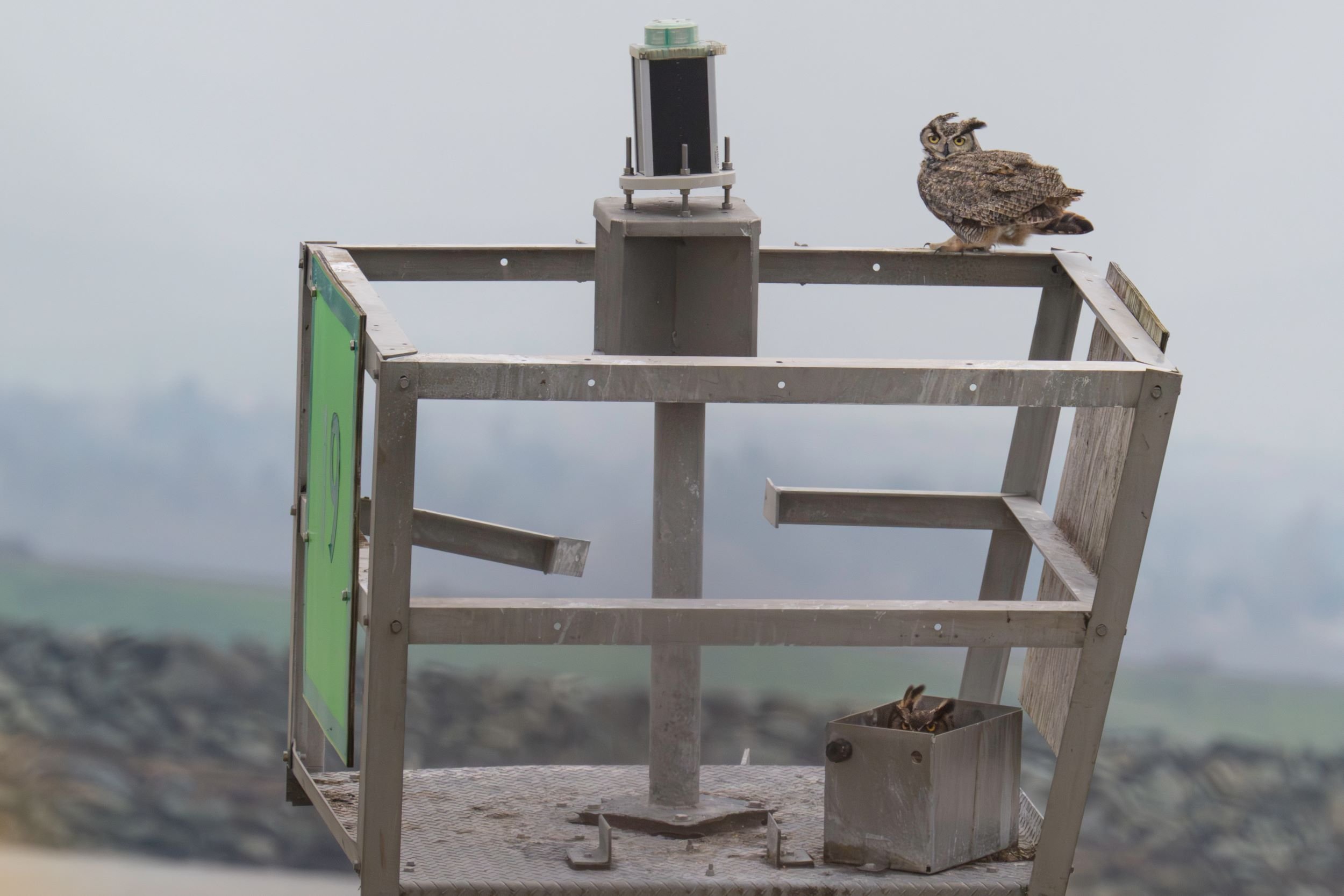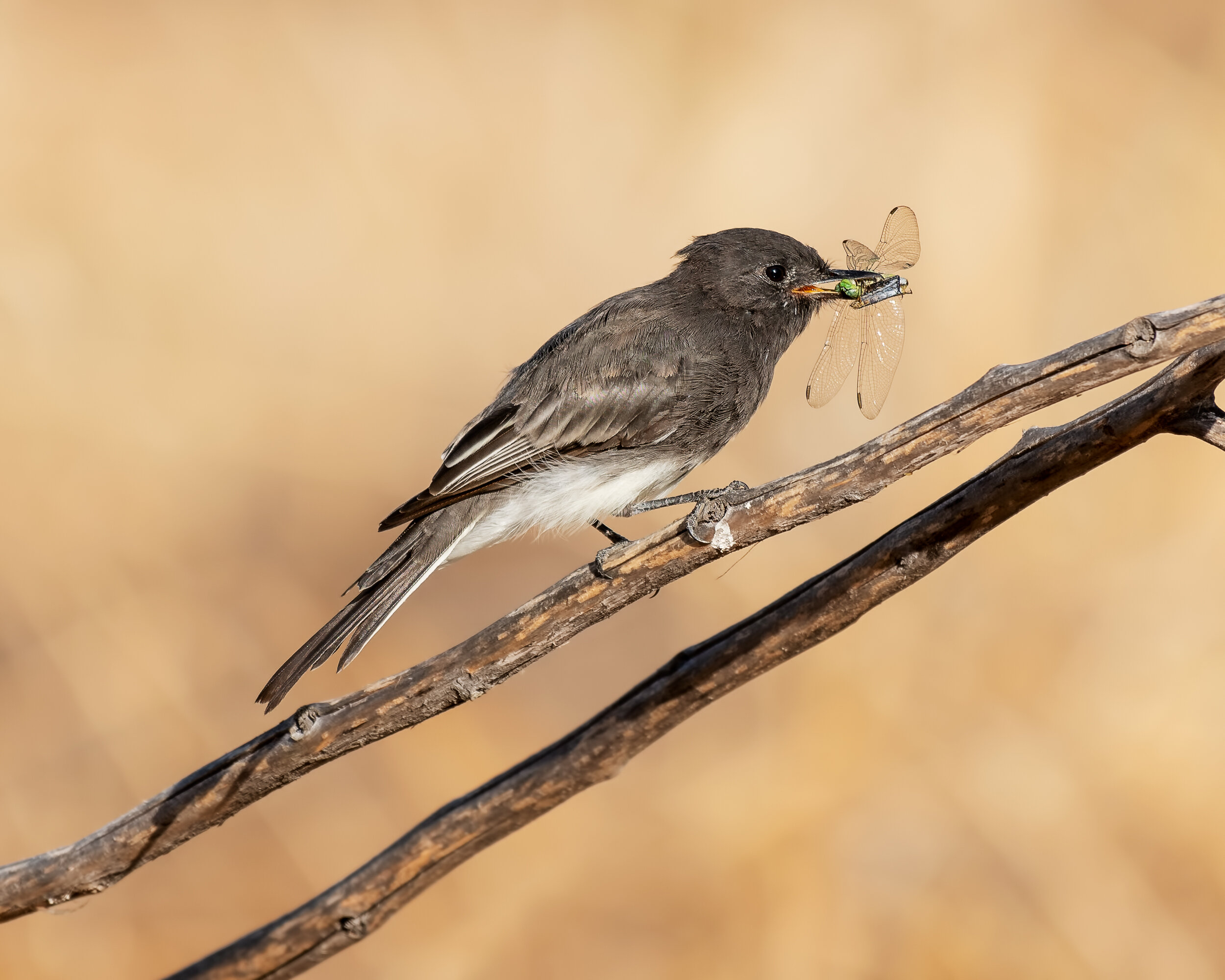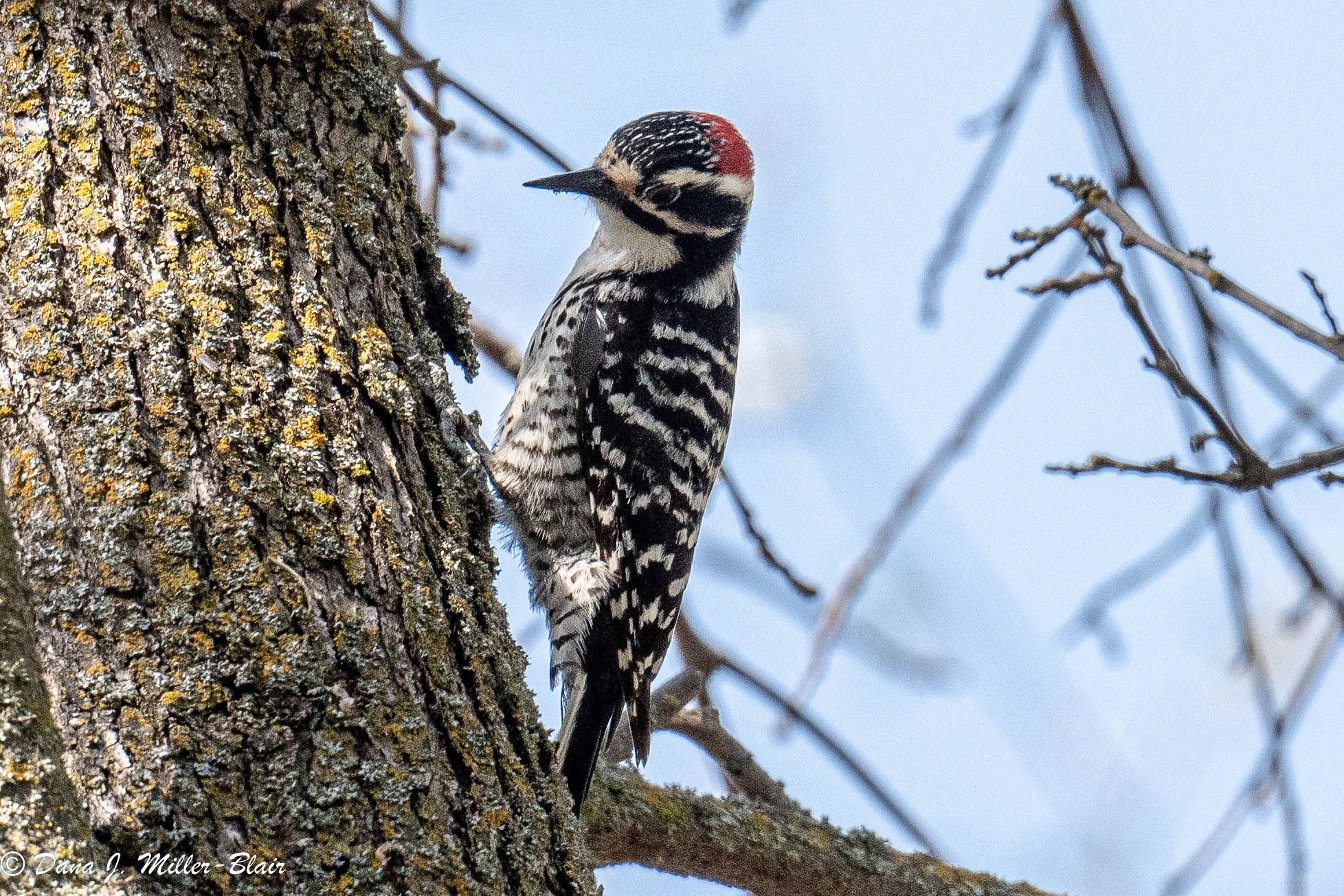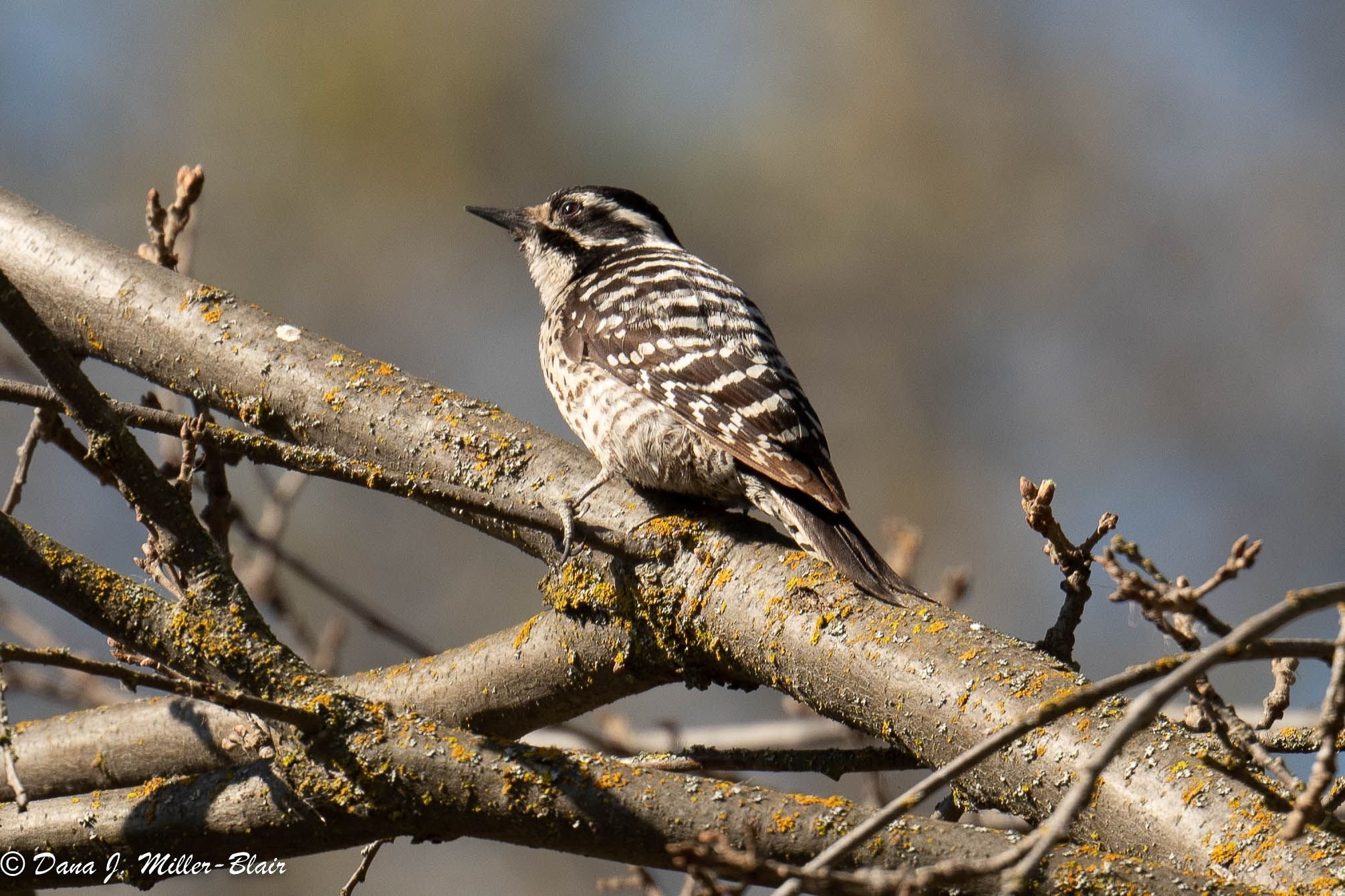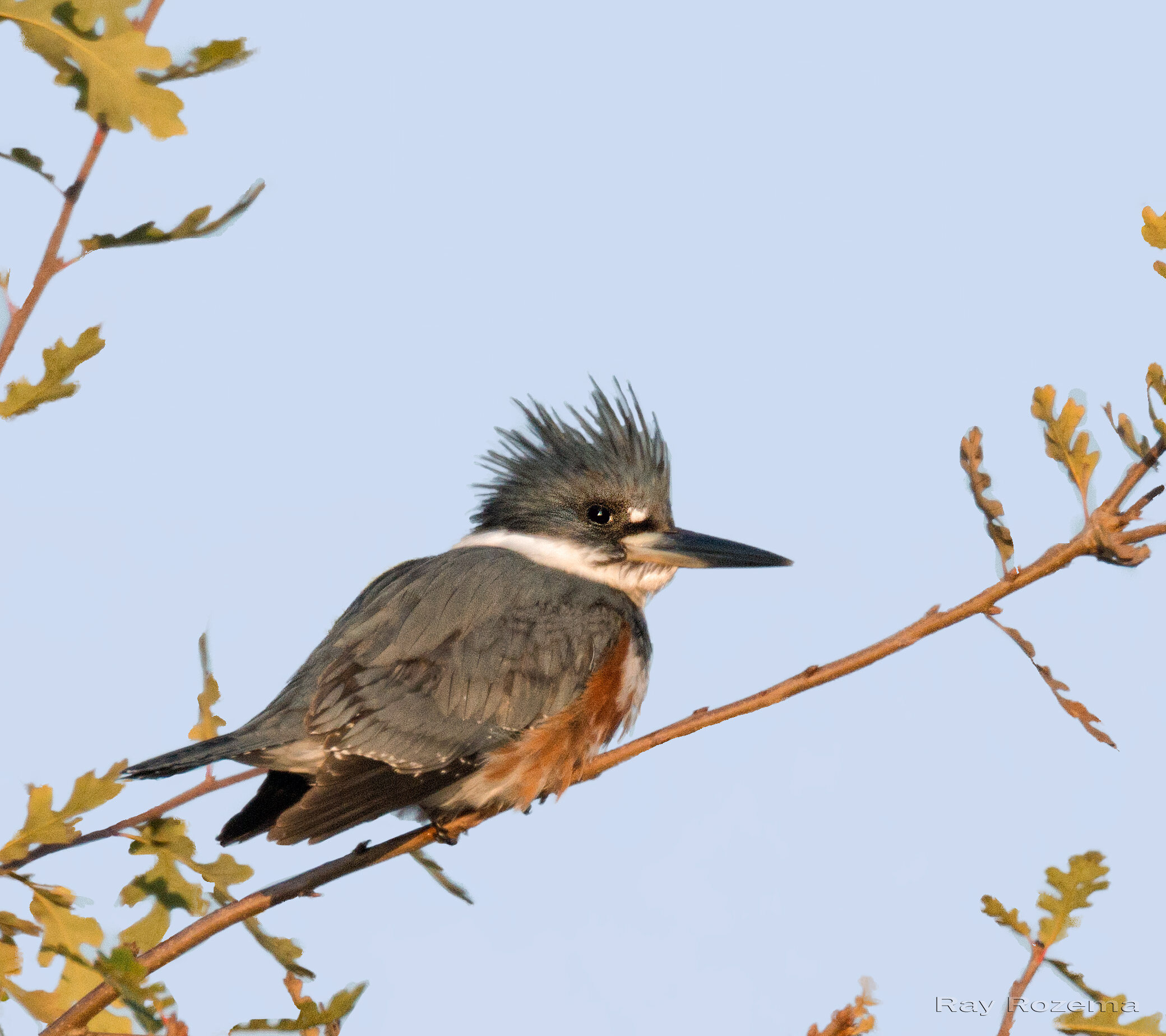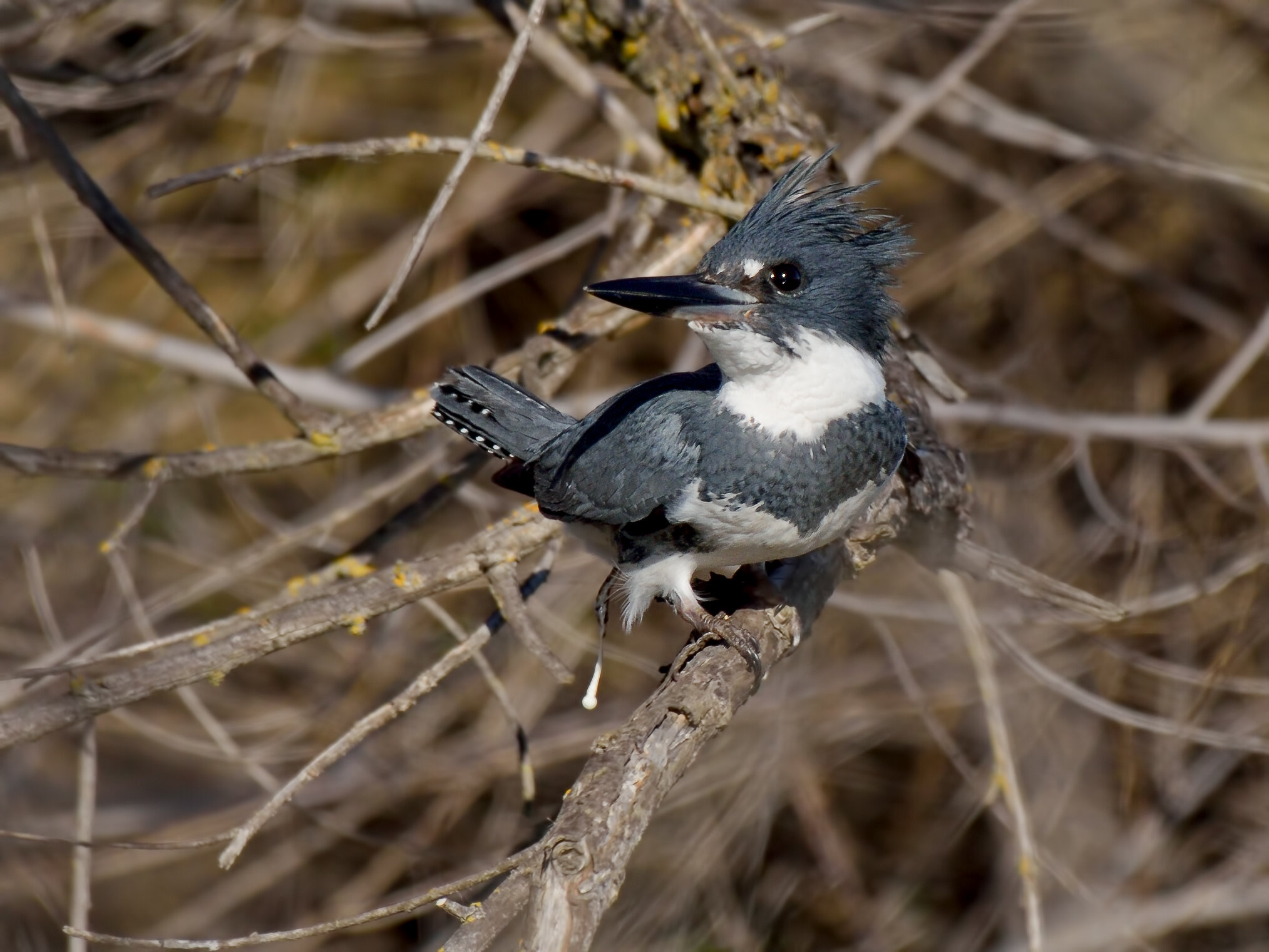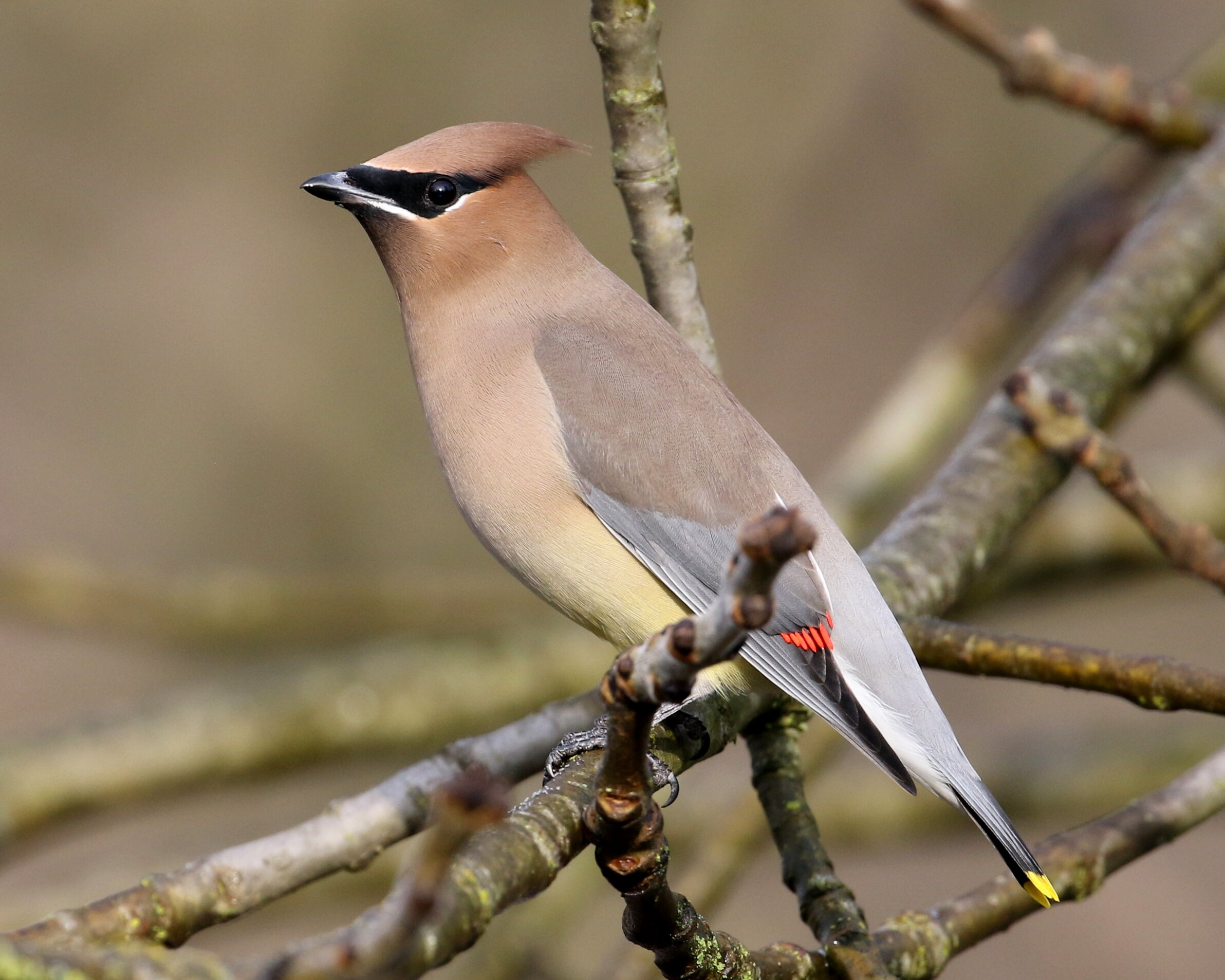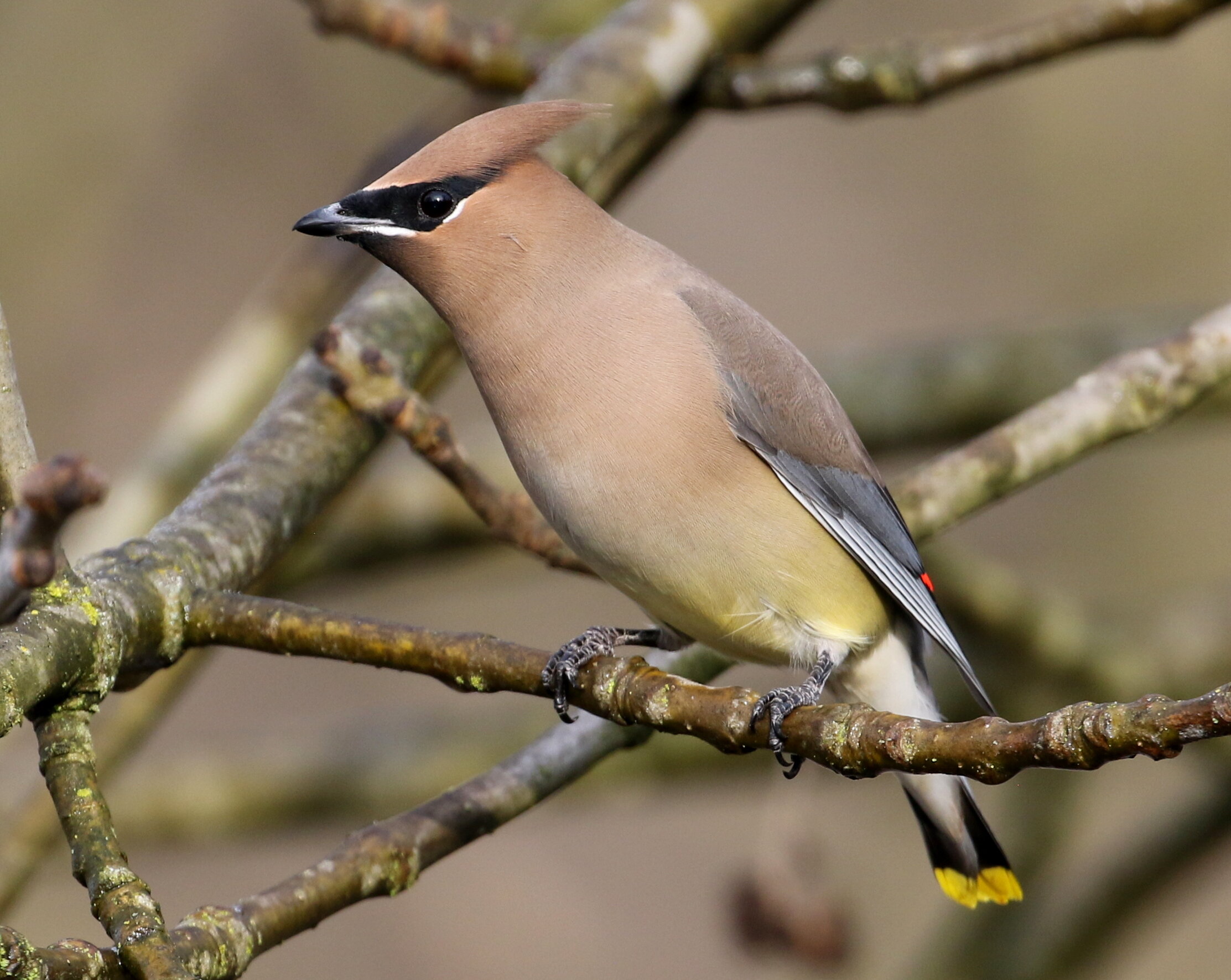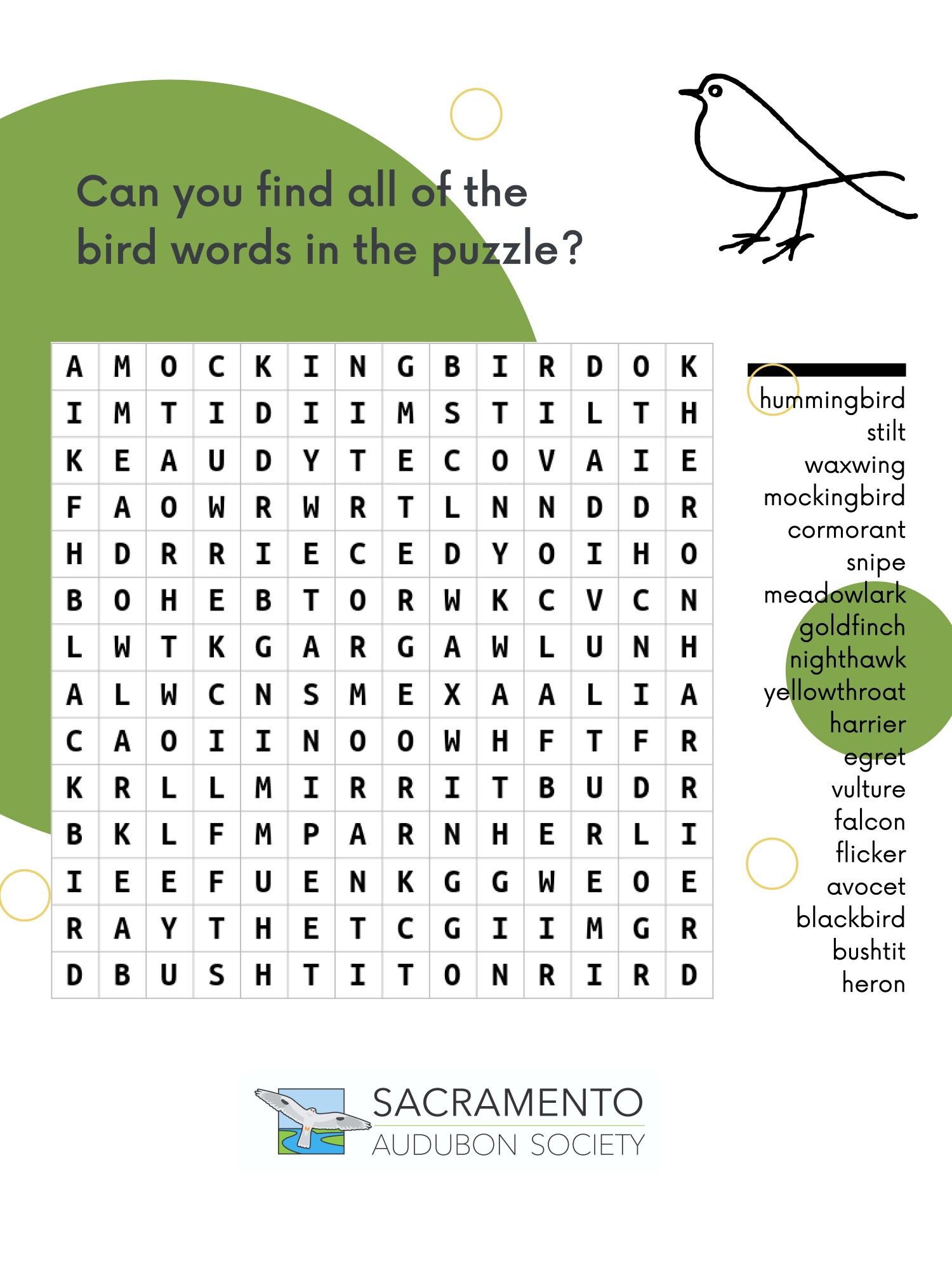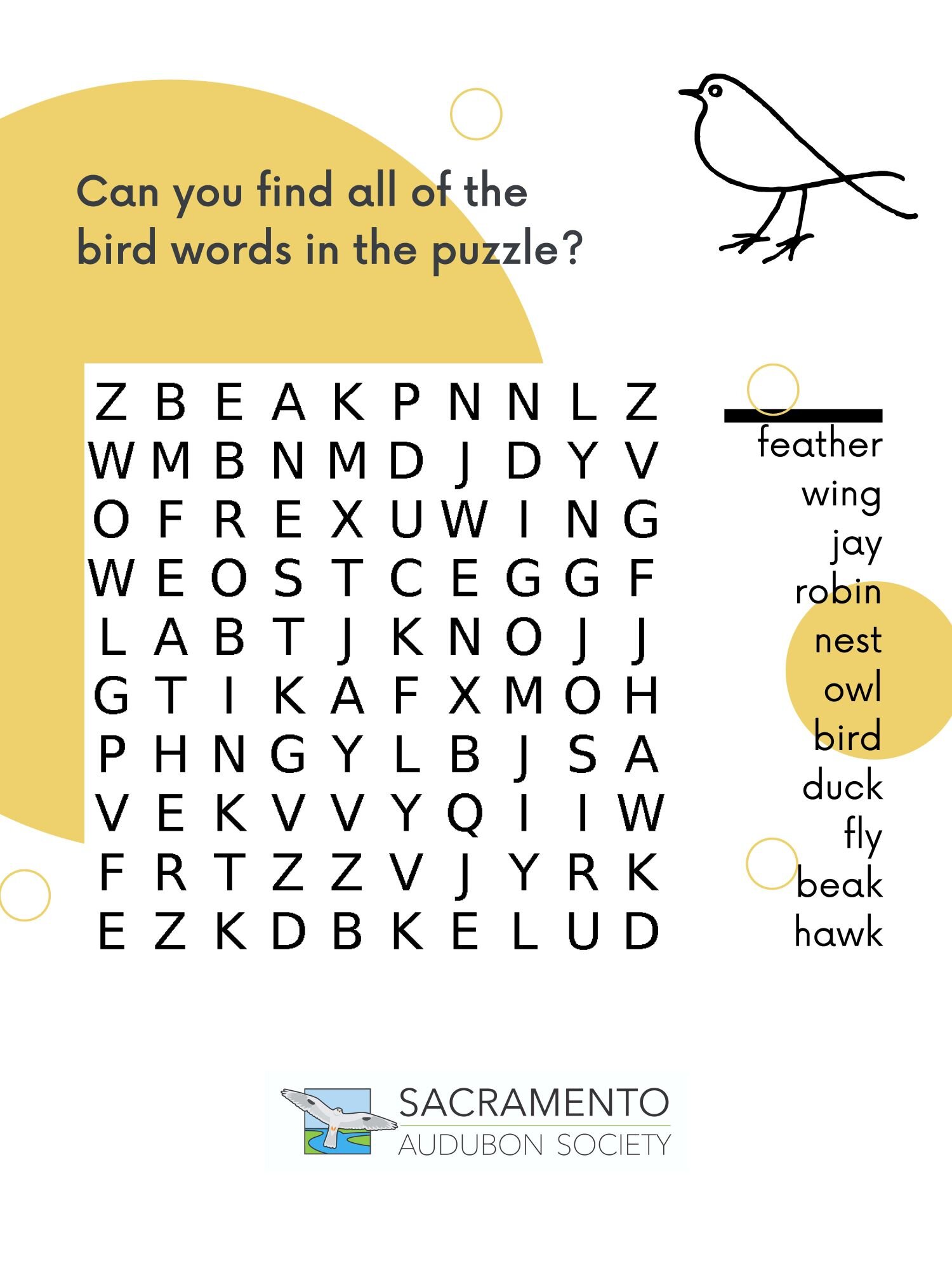Mourning Dove, Adult, Image by Daniel Lee Brown
This month, let’s learn about the Mourning Dove. This bird is frequently seen in the Sacramento area. Mourning Doves are often spotted on telephone wires or when looking for seeds on the ground.
The word ‘mourning’ means to grieve or have great sorrow. Early naturalists described the Mourning Dove’s song as being sad or sorrowful. Mourning Doves, like most birds, use their unique sounds to communicate with other birds in their species or to claim their territories.
You can find Mourning Doves throughout the United States, southern Canada, some parts of Mexico, Bermuda, the Bahamas, and further south into Central America. In Fall, many Mourning Doves that had nested in the North begin to migrate south in flocks.
The Mourning Dove is a very strong flier. It usually flutters at first when it first takes off to fly; but once in the air, it soars gracefully and is quite fast. Migrating Mourning Doves can fly thousands of miles to get to their winter resting areas!
Mourning Doves will usually fly away when disturbed or frightened; but occasionally they use body displays, such as fanning their tails, to try to scare off intruders that come near. When a predator comes too close to the nest, sometimes Mourning Dove parents will fly away from their nest and pretend they are injured on the ground. Then, hopefully the predator will focus on the adult Mourning Dove and forget about the eggs or young birds in the nest. This is called a nest-distraction display.
What Do Mourning Doves Look Like?
Mourning Dove, Adult, Image by Daniel Lee Brown
Mourning Doves are mostly light-brown or light-gray in color. These two colors blend into the open-country habitats where Mourning Doves frequently live. They have slender bodies with small heads, black spots on their wings, and have long, fan-shaped, and pointed tails that have white outer-tail feathers. Males and females look pretty much the same. However, when a male and female are next to each other, you can see that the male’s chest and throat area have a light pinkish tone; whereas the female’s throat and chest are light brown or tan. The male has a bluish-gray area on the crown (top of his head). Juvenile Mourning Doves have more dark spots on their wings than the adult birds do. Juveniles also have an interesting pattern on their wings that look like a group of fish scales.
Where do Mourning Doves Live?
Mourning Doves live in many open or semi-open habitats including suburban yards, city parks, roadsides, agricultural fields, grasslands, and lightly wooded areas. They need trees around their habitat for protection and nesting. Mourning Doves don’t usually stay in swampy areas, dense forests, or in the far North. However, this species has adapted well to living near humans.
Mourning Doves usually build their nests in trees; but will nest in shrubs or even on the ground if they have to. They have been seen nesting in hanging pots or other structures. From February to November each year, female Mourning Doves can lay eggs up to six different times! Two eggs are laid each time. Their nests are not constructed very well and are usually made of grass or pine needles and a few twigs piled loosely on top of each other. The male brings nest-building materials to the female and the female builds the nest. Both parents take turns incubating the eggs (sitting on and keeping them warm). In about two weeks after hatching, the young birds will fledge (leave the nest). The father will continue to bring food to the fledglings for another two weeks. After that, the young birds must look for seeds on their own. The young birds by this time can fly very well and may leave to find areas of their own.
Mourning Dove cooling off in a backyard pond, Image by Mary Forrestal
What Do Mourning Doves Eat?
The diet of Mourning Doves is almost entirely made up of seeds. Occasionally, they eat insects, peanuts, berries, and snails. Mourning Doves walk around, pecking at the ground, to search for seeds. Each day, they try to eat and collect a large amount of seeds. The seeds are stored in an area in their throats called the crop. Later, when the birds are resting, the seeds stored inside the crop will digest ( break down into small particles so that their bodies can use the food for energy and nutrients).
Newly hatched baby birds are fed what’s called pigeon milk or crop milk. This ‘milk’ is made by the parents. It is a partially-digested food that is regurgitated (or brought up again into the mouth after eating). Over the next few weeks, the parents will gradually offer seeds to their young, which will eventually replace the milk.
What do Mourning Doves Sound Like?
Mourning doves are well known for their soft cooing song. People often mistake their song to be the call of an owl. When Mourning Doves take-off flying or when they are landing, their wings make a fluttering, whistle-like sound. Listen to the Mourning Dove now.
These sounds of the Mourning Dove are from xeno-canto. More Mourning Dove vocalizations can be found at xeno-canto.org/species/Zenaida-macroura.
